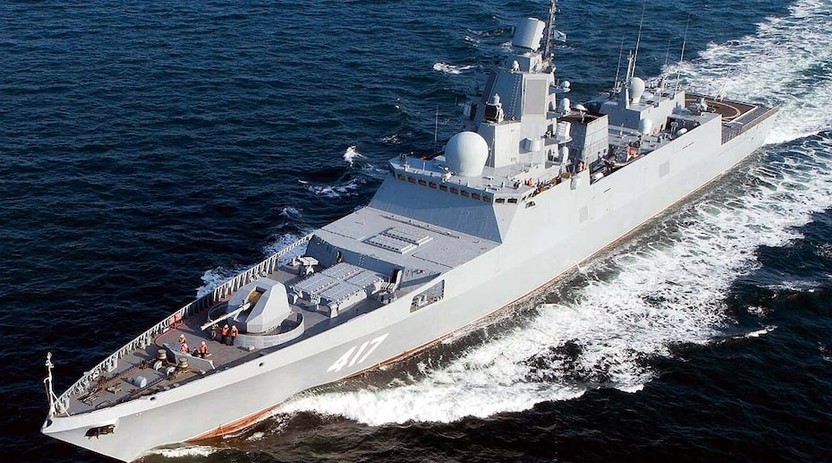The Indian Navy has welcomed its latest addition, INS Tushil , a guided missile stealth frigate. Commissioned on December 9 in Kaliningrad, Russia, the warship marks another milestone in India’s naval power. The ceremony, attended by Indian and Russian dignitaries, showcased the strengthening ties between the two nations in defense and technology.
INS Tushil: Meaning and Design
The name Tushil means “the protector shield,” symbolizing the ship’s defensive and offensive capabilities. Its crest, featuring the motto ‘Nirbhay, Abhedya aur Balsheel’ (fearless, indomitable, resolute), highlights its purpose. This advanced frigate is part of the Krivak V Class, also known as the Admiral Grigorovich Class, designed to combine stealth, speed, and firepower.
INS Tushil measures 125 meters in length and weighs 3,900 tons. It has cutting-edge stealth features to make it harder to detect by enemy forces and offers improved stability. The frigate has a crew of 180 personnel, including 18 officers.
A Collaborative Effort
INS Tushil is the result of a collaboration between India and Russia. Built at a Russian shipyard, the project also involved numerous Indian companies. Approximately 26% of the ship’s components are Indian-made, including advanced systems from BrahMos Aerospace, Bharat Electronics, and Tata Nova Integrated Systems.
The construction was monitored by an Indian team stationed in Kaliningrad. Extensive trials, including factory sea trials and weapon testing, ensured the ship was ready for commissioning.
Powerful Weapon Systems
INS Tushil is a powerful addition to the Indian Navy, equipped with modern weaponry for defense and attack. It carries:
– Eight BrahMos missiles, capable of targeting enemy ships with pinpoint accuracy.
– Surface-to-air missiles for medium and short ranges, ensuring protection from aerial threats.
– A 100 mm gun and close-in weapons for last-minute defense against incoming missiles.
– Torpedo tubes and a rocket launcher to counter submarines.
Advanced radars, sonar systems, and electronic warfare suites make it a highly capable warship for modern naval combat.
Frigates: Guardians of the Seas
Frigates like INS Tushil play a key role in naval fleets. These ships are smaller than destroyers but are highly versatile. They specialize in defending against submarines and aircraft, protecting other ships, and escorting fleets through dangerous waters.
India has a rich history of using frigate-like ships. Modern frigates arrived in the 1920s, introduced by the British. Over the years, the Indian Navy has developed a strong fleet, blending ships of foreign origin with those built indigenously.
Part of a Stronger Fleet
INS Tushil joins an already formidable fleet of Indian Navy frigates, which includes 12 other warships. These are:
– Shivalik Class (three ships), India’s first stealth frigates.
– Talwar/Teg Class (six ships), built with Russian expertise.
– Brahmaputra Class (three ships), older but still effective.
The Navy also operates aircraft carriers, destroyers, submarines, and corvettes, ensuring dominance in the region. INS Tushil’s induction reflects India’s growing focus on modernising its fleet and enhancing its maritime capabilities.
A New Chapter in India-Russia Defense Ties
The commissioning of INS Tushil is part of a broader agreement between India and Russia. The ship is one of two Admiral Grigorovich-class frigates India purchased from Russia in 2018 for ₹8,000 crore. The second ship, INS Tamala, is expected to join the fleet soon. This collaboration highlights the long-standing defense partnership between the two nations, which extends to other areas like artificial intelligence and counter-terrorism.
A Step Forward for the Indian Navy
With its impressive speed of over 30 knots (56 km/h) and advanced capabilities, INS Tushil enhances India’s naval strength. Its commissioning is not just a boost for the Navy but also a symbol of India’s growing focus on self-reliance in defense manufacturing. As more warships join the fleet, India is set to play a larger role in ensuring peace and stability across the seas.

